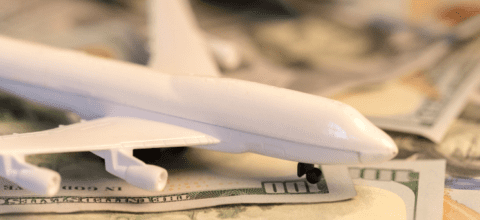Without a doubt, you’ve come across credit cards that promise rewards for your everyday spending. But you may be wondering: What’s the difference between cash back, miles and points. And which type is best for you?
Cash back rewards are the most straightforward because redemption options are simple, and it’s easier to determine the value of each reward you earn. With points and miles cards, you’ll also earn rewards when you use the card for eligible purchases, but redemption options and points values can be more complex. Points cards usually offer more redemption choices, often tied to travel, while miles and hotel cards work in tandem with an airline’s frequent flyer program or a hotel’s loyalty club.
| Cash back | Rewards are simple to understand Cash back is easily redeemable Cards may offer flat rate rewards on every purchase or bonus categories Potential to earn up to 8% cash back on purchases Ideal if you rarely travel | May include a monthly, quarterly or annual earning cap Cards usually don’t offer same benefits and perks as travel cards |
| Miles | Ideal for frequent travelers Cards may offer valuable travel benefits and protections Typically offer elevated rewards on travel purchases Potential to earn up to 10 miles per dollar on eligible purchases May have the option to transfer miles to travel partners | Cards with the most benefits and highest rewards rates typically have high annual fees Value of miles varies based on how they’re redeemed and the rewards program Elevated rewards may be restricted to one airline or hotel Redeeming miles may be complex |
| Points | Flexible redemption options Potential to earn up to 14 points per dollar on eligible purchases Cards may offer robust benefits | Rewards value may vary depending on how you redeem them Redeeming points may be complex |
Cash back rewards — which may range anywhere from 1% to 8% — are earned whenever you use your credit card to pay for eligible purchases. At the end of a billing cycle (or two), rewards for all of the qualifying purchases you made will be credited to your account.
Depending on the card, you may get an automatic statement credit, or the cash rewards may accumulate until you choose to cash them in and have the money deposited into your bank account. You may have the choice to cash in any amount, or there may be a minimum threshold to reach before you can redeem your cash back.
Types of cash back rewards
There are three main types of cash back rewards:
Understanding cash back based on points
Some cash back cards actually earn points (confusing, right?). Really, though, it just means your earnings are tallied as points rather than a dollar amount (one point usually equals 1 cent). However, with this method, you’ll have a bit more flexibility to exchange your points for other types of rewards beyond cash back, or you can transfer or combine your points with another card you have with the same issuer to maximize your earnings.
Figuring out whether a credit card gives you pure cash back or points is not always obvious — you must read through the terms and conditions or offer details.
Here are some examples of cash back cards that earn points:
Redeeming cash back rewards
Cash back is typically awarded in the form of a statement credit to pay off existing charges on your account balance. If you made $500 in purchases in one month with a 2% back credit card, you would earn $10 as a statement credit. As soon as the rewards are credited to your account, you can lower your credit card bill by that amount.
Some credit cards also let you deposit earned cash back into a savings or checking account with the same bank, or issue you a check if requested. Keep in mind that, if you have a minimum amount due on your credit card, you may still have to make that payment in full, in addition to any statement credit.
Points and miles cards work by rewarding you for your spending and allowing you to redeem your credit card earnings in a variety of ways. Each card varies as far as redemption choices, but in general, points and miles cards are aimed at people who want to save on travel expenses.
Some points and miles cards offer general rewards, meaning you can redeem them for any type of travel, as well as for merchandise, statement credit, gift cards or donations. And in case you were wondering, the terms “points” and “miles” are used interchangeably and will mostly operate in the same way.
Other points and miles cards are co-branded, meaning they are connected to a particular airline or hotel’s loyalty program. With those cards, you may earn points or miles specific to the brand (such as American Airlines AAdvantage® miles or Marriott Bonvoy points). Some cards also have a list of travel partners with which you may be able to transfer your points or miles.
The key with points and miles cards is to figure out the best way to redeem your earnings. But travel tends to provide the greatest value.
Types of credit card points and miles
Some of the biggest credit card rewards programs — Chase Ultimate Rewards®, Citi ThankYou® and American Express Membership Rewards — give users points.
How do you calculate the value of points and miles?
The value of points and miles can vary a lot, and depends ultimately on how you actually redeem them. To complicate matters even more, prices for flights and hotel stays vary by location, date and room/seat type. Therefore, a Tuesday flight might be cheaper than a Saturday flight, so the flight cost in miles for each may have a different redemption value.
Your goal should be to squeeze the most points value out of your earned rewards as possible, but in a way that makes sense for your needs. Obviously, you don’t want to alter your entire trip just to bump up your points value. But doing a little number-crunching to determine the points value you’d get for a specific flight or hotel booking can help stretch your budget.
For airline-mile points value, just take the ticket price (minus out-of-pocket taxes and fees) and divide by the number of points needed to cover the cost. So if a flight is $500, with $50 in fees and taxes and costs 45,000 points, your points value is 1 cent per mile.
For hotel point value, the calculation is much the same, except you use the total cash price, including taxes and fees. So if a night costs $300 or 50,000 points, the points value is 0.6 cents per mile.
A cash back card is ideal for someone who wants to get rewarded for everyday spending and who may be new to the world of credit card rewards.
If you don’t plan to go on at least one big trip or a couple of small trips per year, or if you prefer RV or camping getaways that don’t require hotel stays or flying, then you wouldn’t get much value out of a points or miles card that doesn’t offer cash back. If you change your mind, you could always look into a general travel rewards card with a strong sign-up bonus to help fund your next vacation, but in the meantime, you can enjoy cash back rewards on your everyday purchases.
Nothing beats the flexibility of cash back because you can use those savings however you please. By reducing your credit card bill with a statement credit or requesting that your rewards be moved into a bank account or sent as a check (if those options are available), you will have more discretionary cash to use as you please.
Maximizing points and miles cards can require juggling two or more cards, redeeming points through travel portals, navigating airline and hotel programs and sometimes transferring points to partner programs. If that all sounds overwhelming to you, then a simpler cash back card would be a better fit.
Points or miles cards can be ideal for once-per-year vacationers, business travelers and avid jetsetters alike. The key is choosing the type of card that will match your travel and spending style. For example, if you are loyal to one airline and fly multiple times per year, an airline card may make sense. But if you are just looking to offset the cost of your annual family vacation without being tied to a particular hotel chain, a general points card gives you more flexibility.
Even if you travel only occasionally, you can take advantage of a points or miles card. For starters, you may be able to earn an upfront welcome bonus, which can be worth a few hundred dollars toward travel. Many cards also provide travel benefits such as free checked bags, priority boarding, late checkout, trip cancellation insurance and other perks.
Once you get the hang of travel rewards cards, the real appeal of points and miles is for those who enjoy trying to squeeze extra value out of their rewards. In fact, points and miles cards can be much more rewarding than cash back if your spending style aligns with the bonus categories and you redeem strategically.
Take a look at this sample comparison chart below to give you an idea of how valuable points and miles can be:
| Cash back credit card | Flexible points card | |
|---|---|---|
| Sign-up bonus | $200 | 60,000 points |
| Earning rate | 2% cash back on every purchase | 3X points on dining 2X points on travel 1X points on other purchases |
| Annual fee | $0 | $95 |
| Rewards on $3,000 dining | $60 | 9,000 points |
| Rewards on $1,500 travel | $30 | 3,000 points |
| Rewards on $15,500 other spend | $310 | 15,500 points |
| Total rewards | $600 | 87,500 |
| Redeemed for | Cash back | Southwest Rapid Rewards flight ($0.014 per point) |
| Value of redemption | $600 | $1,225 |
| Value minus annual fee | $600 | $1,130 |
If you’re already collecting points and miles with certain programs, you should consider getting a card with the program or a flexible points card that allows you to transfer points and miles. This can help you fast track your way to free flights and stays, or allow you to make the jump to a higher-tier status.
| Rewards programs | Airline partners | Hotel partners |
|---|---|---|
| Amex Membership Rewards |
|
|
| Capital One miles |
|
|
| Chase Ultimate Rewards® |
|
|
| Citi ThankYou® Points |
|
|
The perks that come with the points and miles cards often provide a lot of additional value. For example, an airline card that offers a free checked bag for you and a travel companion can be worth up to $120 per flight (assuming $60 per bag). Other cards offer a statement credit for TSA PreCheck or Global Entry, worth $85 or $120, respectively.
If you’re not sure which type of card wins the cash back versus points and miles debate, the good news is you can reap the benefits of each. As long as you keep your credit healthy and don’t spend beyond your means, having multiple types of cards can be a smart strategy.
For example, you might use a general travel rewards card for spending in categories that earn bonus rates, such as travel or restaurants, and then a cash back card that earns a good flat rate or bonus for grocery shopping.
You can also rotate between cards depending on your upcoming goals. For example, if you’re planning a big trip, you might start using your airline card more to work toward a free flight. Or if you want to buy something new for your home, you might just save up your cash back balance for a while.
The key to any type of rewards card is to pay your bill in full each month so you’re not paying interest charges that can quickly cancel out your earnings.
To see rates & fees for American Express cards mentioned on this page, visit the links provided below:
For Capital One products listed on this page, some of the benefits may be provided by Visa® or Mastercard® and may vary by product. See the respective Guide to Benefits for details, as terms and exclusions apply
The information related to the Wells Fargo Active Cash® Card, Chase Freedom Flex℠, Citi Custom Cash® Card and Bank of America® Travel Rewards Credit Card for Students has been independently collected by LendingTree and has not been reviewed or provided by the issuer of this card prior to publication. Terms apply.
The content above is not provided by any issuer. Any opinions expressed are those of LendingTree alone and have not been reviewed, approved, or otherwise endorsed by any issuer. The offers and/or promotions mentioned above may have changed, expired, or are no longer available. Check the issuer's website for more details.



